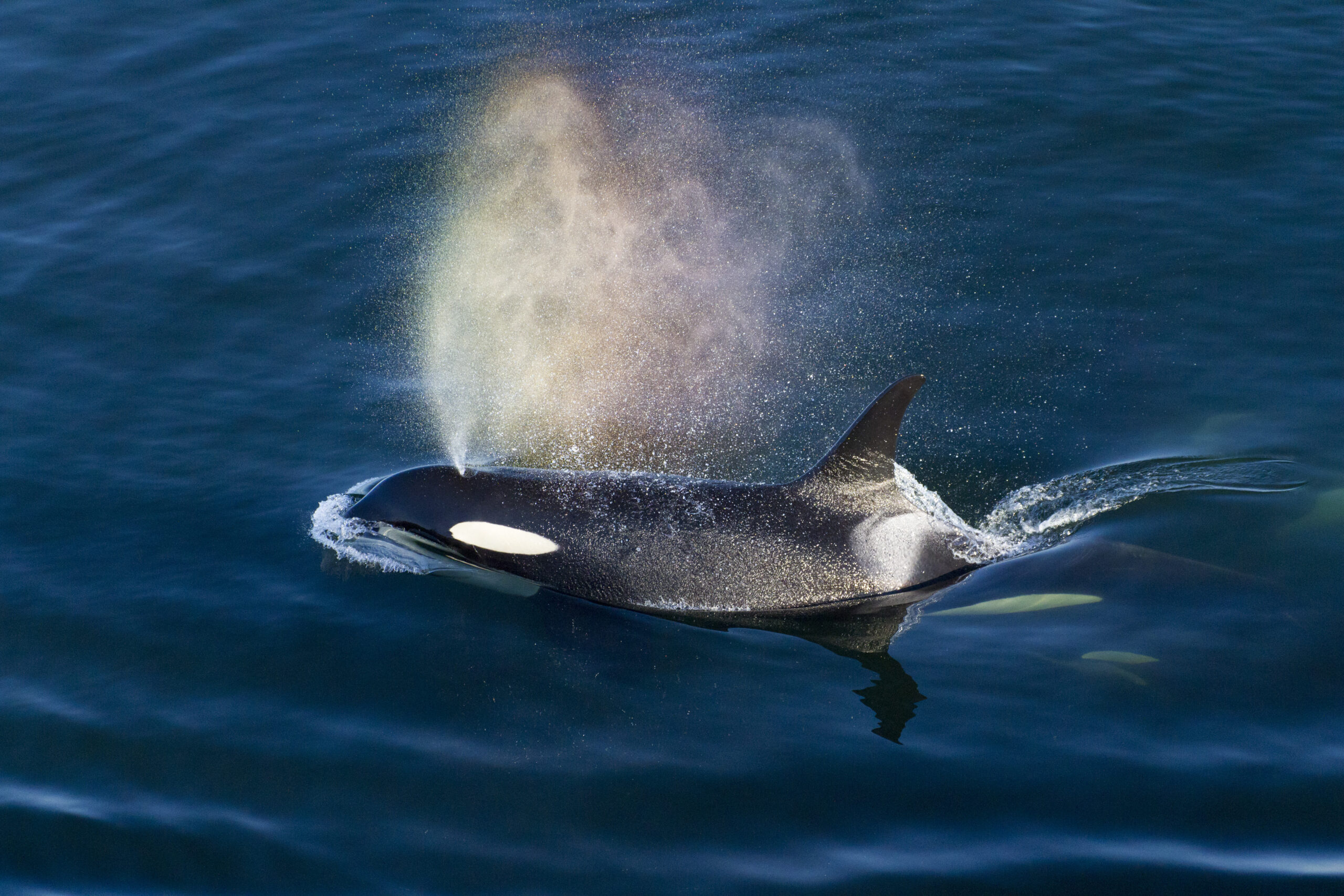Few creatures were more despised, and more often blamed for conditions not their doing, than the orca whales of Puget Sound and the Strait of Georgia back in the 1960s.
They were always called “killer whales.” A National Geographic profile dubbed them savages of the sea, ruthless killers who ripped pieces out of still-living prey. Marine mammals were blamed for the decline of salmon — never mind what we humans had already done to streams essential for spawning.
Namu, the first captive orca, was treated as a kind of caged savage when captor Ted Griffin transported him to a waterfront aquarium in Seattle.
My family were part of the crowd that lined the Deception Pass Bridge.
Namu died a dreadful death, the victim of raw sewage in Seattle’s Elliott Bay.
But captors didn’t stop. They eventually trapped two hundred and seventy orcas, seeking out young whales to turn into performers.
Tokitae, captured in 1970 at Whidbey Island, was the last captive orca, a staple at Seaquarium in Miami for half a century performing as Lolita.
“Toki” had been slated for return to Puget Sound waters.
We came, alas far too slowly, to finally appreciate orcas.
They speak to each other, with Toki for years making sounds recorded in her native L‑pod of our southern resident orca population.
The capture of the whales could be brutal and terrorizing. Underwater firecrackers, nicknamed “seal bombs” were used. When Don McGaffin of KING TV sought to expose the hunt, hunters tried to run down his skiff.
The orcas acquired defenders.
The Lummi people consider Toki a relative and campaigned for the whale’s return home (they are now campaigning for a burial here). Treated with contempt when I was growing up in Bellingham, the Lummi Nation is now a force for nature. They stopped the Gateway Pacific Coal Export Terminal proposed for Cherry Point.
The state in 1971 set limits on whale captures.
Congress passed the Marine Mammal Protection Act, albeit with a provision that allowed the forcible recruitment of performing orcas to continue.
The galvanizing incident came in 1976 when whale captor Don Goldsbury trapped six orcas in Olympia’s Budd Inlet. The whole world was watching.
Appalled after viewing the capture, gubernatorial aide (future Secretary of State) Ralph Munro mobilized southern resident Republicans. Another witness, Seattle Post-Intelligencer Capitol reporter Mike Layton, wrote a furious story, topped by a P‑I headline comparable to V‑J Day. The offspring of Willi and Jolene Unsoeld paddled kayaks out to the enclosure and tried to talk to the orcas.
The whales themselves were resourceful. Three of the six escaped on their own. Governor Dan Evans denounced the capture.
Attorney General Slade Gorton initiated federal court action.
I had one tiny bit of involvement. The phone rang at my P‑I desk, the caller being former Minnesota Sen. and anti-Vietnam War presidential candidate Eugene McCarthy. He was on the board of directors at Alfred Knopf. The book publisher had acquired SeaWorld, where the whales would perform.
I ran down the controversy.
Clean Gene had one question on his mind. Was Senator Warren Magnuson, a sponsor of the Marine Mammal Protection Act, of a mind to get involved?
Yes, I told him. Which was what he needed to know.
Faced with federal court action, a public relations nightmare — and Maggie — Sea World surrendered its prey. The remaining orcas were set loose and the scene in Budd Inlet marked the last whale capture in waters of the Salish Sea.
Howard Garrett, of Orca Network, posted last week that all three pods of the southern resident population had come together off the west side of San Juan Island, a rare “super-pod” event.
“We believe they are welcoming Toki home,” he wrote.
The southern resident population increased after the end of capture but has since declined to seventy-three orcas. They have been classified under the Endangered Species Act, as have the chinook salmon, their principle food source. (Reasonable Dan Evans Republicans have also now become a critically endangered species.)
Where once reviled, orca whales are now considered an indicator species in the natural and cultural ecosystems of our great Pacific Northwest. They have a much more important role than to perform. Welcome home, Toki.

